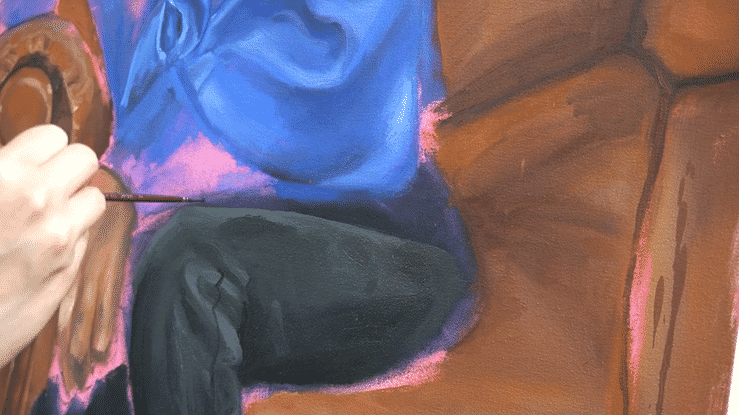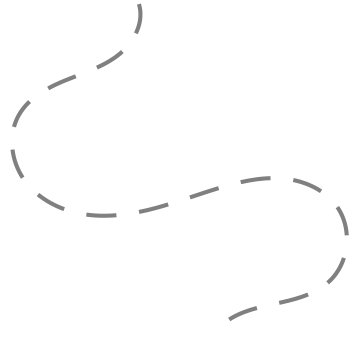
QUEUE is a video-based platform devoted to providing an intimate, first-hand look into the daily lives of artists. Highlighting a new body of work, each series includes five short videos, all of which are shot and recorded by the featured artist themself. Raw, authentic, and straight from the source, the series is based in storytelling, chronicling a set range of topics from childhood memories to studio practice to major influences and values. The casual nature of the platform paired with the artist’s power of agency throughout its creation offers a unique and relatable approach to familiarizing the viewer with the face behind the work.
The inaugural iteration of QUEUE follows Detroit-native Cydney Camp: from growing up as a musician to working a corporate job prior to embracing her art practice full time, viewers are invited to learn about the simple details that make up Camp’s character as well as the major life events that have guided her to where she is today. In her work, Camp lovingly deconstructs the figure to explore the complexities of contemporary life. She depicts Black subjects existing in familiar yet alternative realities, their multitude of identities and modes of being probing nonlinear lived experiences in real time. A number of works created for QUEUE are of the first Camp has painted from live sittings, a process she’s warmly adapted since welcoming a new community of artists and friends at Cranbrook Academy of Art where she will be a second-year painting student this fall.
Episodes
Episode 1
Episode 1
Meet Cydney Camp. Learn about the artist’s love for music, cooking and reading amongst other hobbies outside of artmaking. She shares her story of living with a chronic illness and her hope to inspire people who may be dealing with similar challenges.
Episode 1
Meet Cydney Camp. Learn about the artist’s love for music, cooking and reading amongst other hobbies outside of artmaking. She shares her story of living with a chronic illness and her hope to inspire people who may be dealing with similar challenges.

Episode 2
Episode 2
Camp discusses her unconventional path to pursuing a career as an artist: from growing up as a musician, to studying political science at Michigan State University, to working a corporate job in economic development post-grad, it wasn’t until 2017 that Camp first experimented with oil paint. She reflects on efforts to establish a sustainable business model as an artist, as well as notable lessons learned in her first year at Cranbrook.
Episode 2
Camp discusses her unconventional path to pursuing a career as an artist: from growing up as a musician, to studying political science at Michigan State University, to working a corporate job in economic development post-grad, it wasn’t until 2017 that Camp first experimented with oil paint. She reflects on efforts to establish a sustainable business model as an artist, as well as notable lessons learned in her first year at Cranbrook.

Episode 3
Episode 3
Take a look inside the artist’s studio: Camp guides the viewer around her workspace and offers insight into the intentions that drive her practice. Exploring themes of identity in her paintings, particularly within the Black community, live painting footage reveals a unique understanding of her emotive and intuitive approach to figuration.
Episode 3
Take a look inside the artist’s studio: Camp guides the viewer around her workspace and offers insight into the intentions that drive her practice. Exploring themes of identity in her paintings, particularly within the Black community, live painting footage reveals a unique understanding of her emotive and intuitive approach to figuration.

Episode 4
Episode 4
Camp details the creation of and inspiration behind her paintings “Horsepower” and “Akea Seated.” Portraits of friends and fellow artists Fidelis Joseph and Akea Brionne Brown, the works are of the first Camp has painted from live sittings, a process she’s warmly adapted since welcoming a new community at Cranbrook. Viewers will learn about the objectives that contrive the grand and minute details within each piece.
Episode 4
Camp details the creation of and inspiration behind her paintings “Horsepower” and “Akea Seated.” Portraits of friends and fellow artists Fidelis Joseph and Akea Brionne Brown, the works are of the first Camp has painted from live sittings, a process she’s warmly adapted since welcoming a new community at Cranbrook. Viewers will learn about the objectives that contrive the grand and minute details within each piece.

Episode 5
Episode 5
Wrapping up, Camp considers her future goals as an artist, and reflects on her appreciation for the freedom that defines her creative path. Motivating Camp each day is the ambition to be honest, expressive and raw in a way that uplifts the Black community and resonates with herself and with her viewers.
Episode 5
Wrapping up, Camp considers her future goals as an artist, and reflects on her appreciation for the freedom that defines her creative path. Motivating Camp each day is the ambition to be honest, expressive and raw in a way that uplifts the Black community and resonates with herself and with her viewers.
Artworks
“My work explores themes of identity, particularly within the Black community—Black women especially. I think it’s important to highlight us and the diversity of our everyday lives through this medium of oil paint which historically is something that has never allowed space for Black people or people of color.”
— Cydney Camp
“I find that there’s a lot of beauty in the moments where I can uplift my community and people who look like me.”
— Cydney Camp

Cydney Camp
About Cydney Camp
Cydney Camp (b. 1994, Detroit) is an artist whose oil paintings and drawings investigate the Black psyche and experience in America.
She lovingly deconstructs the figure to explore these complexities of contemporary life to depict Black, often femme, subjects existing in familiar yet alternative realities. Her subjects continually come together and fall apart. Their multitude of identities and modes of being probe a nonlinear lived experience in real time. Distorted perspectives, abstract compositional strategies, and a sensorial color palette forms dreamlike scenes that suggest an experience outside the exploitative extraction of the Black body that pervades our broader cultural ethos.